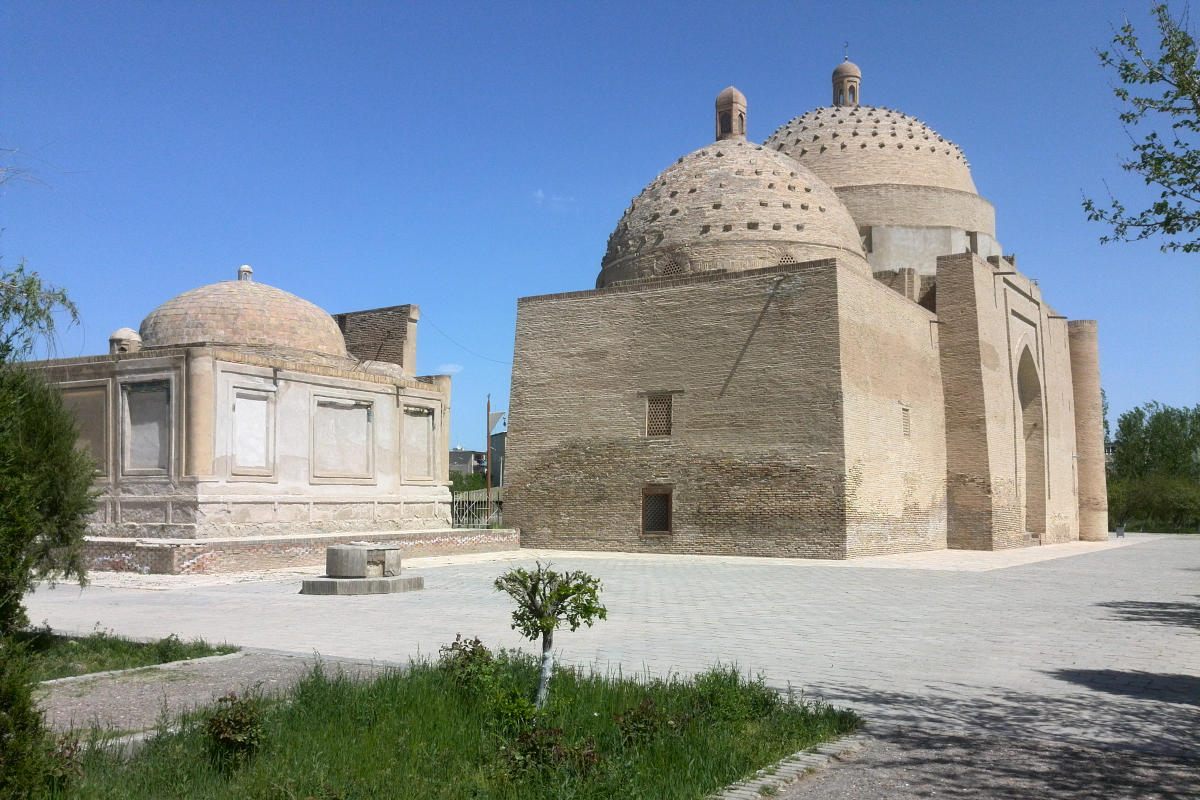Bukhara - Sayf ad-Din Baharzi Mausoleum

The Sayf ad-Din Baharzi Mausoleum in Bukhara: a centre of Sufi spirituality and architecture
The Sayf ad-Din Baharzi Mausoleum in Bukhara is an impressive testimony to the spiritual and architectural tradition of Central Asia. It honours the life and work of Sheikh Sayf ad-Din Baharzi (1190 – 1261), an outstanding Sufi master who spread the teachings of the Kubrawiyya brotherhood and left a profound mark on the spiritual landscape of the region.
The life and work of Sayf ad-Din Baharzi
Sheikh Sayf ad-Din Baharzi was a murid (disciple) of Najm ad-Din Kubro (d. 1220), the founder of the Kubrawiyya tariqa. This brotherhood of Sufis was known for its profound mystical practices and its mission to spread Islamic spirituality. Sayf ad-Din Baharzi brought his master’s teachings to the city of Bukhara, where he founded one of the most important Khanaqas (Sufi monasteries) in the region.
His role in the conversion of Berke Khan, the ruler of the Golden Horde, to Islam is particularly noteworthy. This event marked a significant turning point in the spread of Islam among the Mongolian peoples and contributed to the consolidation of the faith in Central Asia.
The Kubrawiyya Brotherhood and its teachings
The Kubrawiyya brotherhood, which extended to the borders of western China, was known for its unique spiritual practices. The followers of this tariqa practised both silent and loud zikr (the ritual remembrance of God), self-singing and ascetic practices such as fasting, silence and withdrawal from the world. The main aim was to achieve deep inner purity and unflagging devotion to divine remembrance.
In the Fatkhabad community, the authority of the supreme sheikh (caliph) was hereditary, whereby Sayf ad-Din Baharzi’s descendants took over the spiritual leadership and continued the teachings of the Kubrawiyya.
The mausoleum: an architectural masterpiece
The Sayf ad-Din Baharzi Mausoleum in Bukhara impresses with its clear architectural lines and monumental size. It consists of two main parts: the Purkhona (burial chamber) and the Ziyarat-Khona (memorial chamber). The two domes that dominate the profile of the building give the mausoleum a majestic silhouette.
Although the building appears almost unadorned, it harbours a real treasure inside: the luxurious tombstone of Sayf ad-Din Baharzi. This masterpiece of medieval woodcarving is characterised by the astonishing delicacy and complexity of its ornamentation. The plant ornamentation is carved with impressive complexity, and the intricate Arabic inscriptions wind their way across the wood in an elaborate ligature.
Historical significance and heritage
After Sayf ad-Din Baharzi’s death in 1261, he was buried in the Fatkhabad district of Bukhara. At the end of the 13th century, the current mausoleum was built over his grave. In the 14th century, the domed building of the Chanaqa with a portal was added, which served as a meeting place for the Sufi community.
Until the late 18th century, the Khanaqa remained an important place of spiritual gatherings and a centre of the Kubrawi tradition. The Sufi scholars of the Fatkhabad community carried on the teachings of Sayf ad-Din Baharzi and Nadschm ad-Din Kubro for centuries, and the mausoleum developed into a place of pilgrimage and devotion.
The Sayf ad-Din Baharzi Mausoleum in Bukhara is much more than just a historical building. It embodies the deep spirituality and rich heritage of the Sufi tradition of Central Asia. The teachings of Sayf ad-Din Baharzi, the architecture of the mausoleum and the legends surrounding this sacred place make it a living symbol of the connection between religion, culture and history in Bukhara. To this day, this mystical place attracts pilgrims and visitors who want to experience the tranquillity and majesty of this unique monument.
